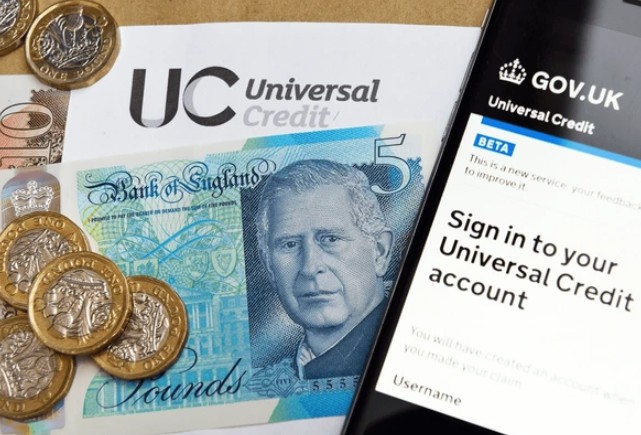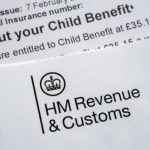As the UK continues to navigate a challenging economic climate, millions of people are still facing the long-term impacts of high inflation, increased energy costs, and mounting food bills. For households that rely on government assistance, particularly Universal Credit, one key question remains front and centre in 2025:
“Universal Credit Cost of Living Payment When Will It Be Paid?”
This article provides a complete, up-to-date guide on what to expect regarding cost of living payments for Universal Credit claimants in 2025 — covering payment dates, eligibility, changes from previous years, and where to seek additional financial help if needed.
What Is the Universal Credit Cost of Living Payment?

The term “cost of living payment” refers to a series of one-off payments introduced by the UK government between 2022 and 2024 to support low-income and vulnerable households. These payments were meant to cushion the impact of:
- The energy price surge
- The general rise in the cost of essentials
- The lasting economic effects of the COVID-19 pandemic
- Record-high inflation rates
Those receiving means-tested benefits, including Universal Credit, Pension Credit, ESA, Income Support, JSA, and Tax Credits, were eligible for these non-repayable payments.
The scheme was one of the government’s largest direct support initiatives, benefiting over 8 million households across the UK. However, with the programme officially ending in 2024, many are now wondering what help — if any — is available in 2025.
Is There Still a Cost of Living Payment in 2025?
Yes — while the official “Cost of Living Payment” programme concluded in 2024, the government has introduced a new one-off support payment for people on low incomes in 2025.
This new payment, worth £450, is being automatically issued to eligible Universal Credit recipients and those on certain other benefits.
Although this payment is not being officially marketed under the same “Cost of Living Payment” name, its purpose remains the same: to provide direct financial relief during a period when everyday costs continue to rise faster than incomes.
This payment serves as a transitional support measure, as the government evaluates how best to restructure benefits and long-term welfare policy going forward.
Universal Credit Cost of Living Payment When Will It Be Paid?
The Department for Work and Pensions (DWP) confirmed that the £450 support payment would be paid between:
- Start Date: 6 May 2025
- End Date: 30 June 2025
The rollout is taking place in phases, similar to previous cost of living payments. The date you receive your payment depends on your Universal Credit assessment period, which is based on your specific claim dates.
Important note: If your assessment period fell within the qualifying window set by the DWP and you met all eligibility criteria, you should receive your payment automatically into your registered bank account, without needing to apply.
Many people will have already started receiving the payment in early to mid-May, and the rollout will continue until the end of June 2025. If you haven’t received it yet, don’t panic — delays can occur depending on individual claim timing and banking processes.
Eligibility Criteria: Who Will Receive the 2025 Payment?
To receive the £450 payment, you must satisfy the following three key conditions:
1. You must be in receipt of Universal Credit
You need to be in an active claim for Universal Credit during the government’s qualifying period. The exact dates of this window vary slightly depending on payment cycles but are typically announced by the DWP a few weeks in advance of the rollout.
2. Your payment must not be reduced to £0
Also known as a “nil award”, if your Universal Credit payment was reduced to £0 due to an increase in earnings, savings, or because of a sanction, you may not qualify for this payment.
This rule has caused confusion and frustration in previous years, especially for people whose income varies month to month.
3. Your claim must be continuous
If your Universal Credit claim was interrupted or closed during the qualifying period — for example, due to administrative issues or changes in circumstances — you may not be eligible.
Maintaining a continuous claim ensures automatic payment if you meet the income and benefit criteria.
How Will You Receive the £450 Payment?

You will receive the payment in the same way you usually receive your Universal Credit. That means it will be deposited directly into your bank account or building society account.
There is no application process. If you are eligible, the payment will be made automatically, just as previous cost of living payments were.
Payments will appear on your bank statement under a reference similar to:
DWP COLP May 2025
It’s always advisable to check your Universal Credit online journal for official messages or updates from your work coach or the DWP.
What To Do If You Don’t Receive the Payment
If you believe you qualify for the 2025 payment but haven’t received it by early July, follow these steps:
- Check your eligibility carefully, including your Universal Credit award amount during the qualifying period.
- Review your UC journal or payment history to ensure no interruptions to your claim.
- Contact the DWP through your Universal Credit account or by phone to request a payment review.
Also, be vigilant for scams. The DWP will never ask for personal or banking information via email, text, or social media. Always communicate through official channels.
What Happened to Previous Cost of Living Payments?
Between 2022 and 2024, the UK government issued several cost of living payments:
- £650 in 2022 (split across two payments)
- £900 in 2023–2024 (split into three instalments: £301, £300, and £299)
- Additional support for pensioners and people with disabilities
These payments were significant and helped cushion the blow for many households during an economically turbulent period. However, the government decided not to extend the named “Cost of Living Payment” scheme into 2025.
Instead, the £450 payment in 2025 serves as a streamlined form of continued assistance for low-income groups, with fewer instalments and a simplified process.
Additional Support Available in 2025
Even with the new £450 payment, many households still face financial pressure. Fortunately, there are several other types of support available, including:
1. The Household Support Fund

The Household Support Fund (HSF) is a discretionary fund distributed by local councils to help vulnerable residents with:
- Emergency food support
- Energy and water bills
- Essential clothing
- School-related costs for children
- Furniture and white goods
Each council sets its own eligibility rules and application process. Funds are limited and often allocated on a first-come, first-served basis.
Visit www.gov.uk/find-local-council to apply via your local authority.
2. Energy Supplier Support Schemes
Some energy providers offer hardship funds or flexible payment plans for customers struggling to pay their energy bills. These schemes are independent of government aid and can include:
- Debt write-offs
- Emergency fuel vouchers
- Payment holidays
Check with your provider or visit Ofgem’s support pages for more.
3. Free School Meals and Uniform Grants
If you’re on Universal Credit and have children, you may qualify for:
- Free school meals
- Pupil premium funding
- School uniform vouchers
Contact your local education authority or school for more information.
Key Takeaways: Summary Table
| Detail | Information |
|---|---|
| Payment Amount | £450 |
| Payment Window | 6 May 2025 – 30 June 2025 |
| Eligibility | Universal Credit claimants (with active claim, not £0) |
| Application Needed? | No — automatic payment |
| Payment Method | Direct bank transfer |
| Other Support | Household Support Fund, energy grants, school aid |
| Who to Contact | DWP via UC online journal or helpline |
Final Words: The Bigger Picture for 2025 and Beyond
The £450 payment for Universal Credit claimants in 2025 is a lifeline for many, helping to ease the strain of ongoing cost-of-living challenges. However, it’s just one part of a much larger conversation about social security reform, economic resilience, and support for working families in the UK.
As the government looks toward future benefit adjustments and long-term policy shifts, households must stay informed about what help is available and act quickly when new schemes are launched.






